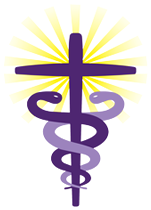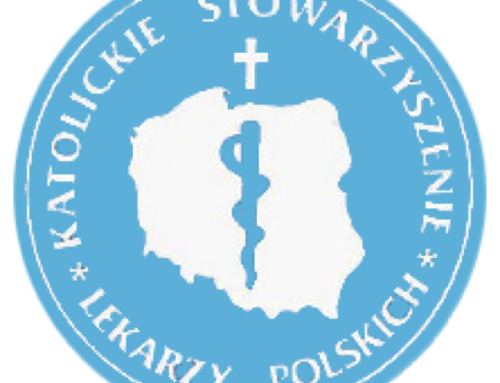Foundation of the Guild of Catholic Doctors
October 11th 1911
Michael Straiton KCSG
In the late 19th century numerous Catholic societies were formed to undertake useful social work across Great Britain but the great drawback was the lack of intercommunication between Catholics in different parts of the country.
The Guild of Catholic Doctors was formed in 1911 when it was realized that there was a difficulty in identifying those Catholic doctors in Great Britain who might be called upon to serve the Catholic Boys Brigades. The Medical Register, founded in 1858, in which registration of all medical practitioners was compulsory, was of not much help.
The Catholic Boys Brigade was founded in Deptford in 1896 to maintain the welfare of boys after they had left Catholic elementary schools, to keep them in touch with the Church and to provide in various ways for their spiritual, physical and social wellbeing. The movement expanded and by 1910 there were 80 Brigades across the United Kingdom. A problem arose when Catholic doctors were sought to attend sports and other functions where their services might be required: Catholic members of the medical profession were unknown to the public at large as Catholics, and were mostly unknown to each other.
A distinguished British army veteran, Surgeon General Thomas Maunsell CB, LLD had the idea of forming a guild to unite Catholic doctors as a body. It was to be dedicated to three doctors of antiquity – Saint Luke and Saints Cosmas and Damian. Such guilds had already existed in Spain and France from at least the 16th century, indeed, the French Guild had been formally reconstituted on 27th September 1884 and by 1910 it had 11,000 members. Maunsell and a few others, with the generous assistance of the French Guild, drew up the prospective rules and aims for our own medical society.
On 21 October 1911 the Guild of Catholic Doctors officially came into being. Mass was offered in Westminster Cathedral for the success of the new society, followed by its first meeting held at Archbishop’s House, Westminster, with twenty founding members, where the rules and appointments were officially confirmed with the title of the Guild of Saints Luke, Cosmas and Damian. A resolution was passed to affiliate with other known Catholic medical guilds of recent origin, such as those in New York, Boston, Philadelphia and New Orleans in the United States. A vote of thanks was passed to the French Guild for the prompt, generous and cordial manner in which they had assisted. The annual subscription was set at 2/6d (12.5p.) and life membership was £1 – how times have changed !
The object of the Guild was to constitute a brotherhood of all Catholic members of the
medical profession in this country, and to study and discuss medical questions in the light of Christian Revelation.
The aims by which this could be accomplished would be :
- To bring forward expert knowledge from the treasure-house of physical science, to supplement the philosophical and theological sciences.
- To circulate literature and form a Catholic Medical Library.
- For Members to provide each other with mutual assistance in their religious and professional life.
- To render assistance to Catholic institutions as may be practicable.
- To promote solidarity among members as may be advantageous to both their religion and profession.
- To recruit medical students.
- To foster medical missionary training like the Anglican Guild.
- By the Guild offering its services to administer legacies to medical charities.
- By the chaplains offering Masses on the feasts of St Luke (18 October) and Saints Cosmas and Damian (27 September), for Members both living and dead.
In August 1913 a Medical Congress was held in London and Cardinal Bourne offered Mass in Westminster Cathedral to celebrate the occasion and preached the sermon. By 1914 membership of the Guild had risen to 224 and the first edition of The Gazette was published, price 6d.(2V2p.) This proved to be the last issue before the declaration of the Great War in August after which the Guild went into temporary abeyance. It was revived soon after the end of hostilities in 1918 and by the A.G.M. of 1920 membership had risen to 288. A year later The Gazette was revived, but unfortunately failed after the first issue due to lack of funds.
Conditions slowly improved and in 1923 it was possible to produce the first issue of the quarterly journal of the Guild then known as the Catholic Medical Guardian. This was a publication of high standard with a wide diversity of interesting material which over the years played an important role in the life of the Members. With a further change of name to The Catholic Medical Quarterly it has continued to do so ever since.
Shortly before Thomas Maunsell’s death at the Convent of the Blue Nuns at Uxbridge on 29th December 1937, Arthur Hinsley, Archbishop of Westminster, who had presided at the annual general meeting of the Guild, was created Cardinal Priest. The January 1938 issue of the Guild’s journal states: “To His Eminence, Arthur, Cardinal Hinsley, Archbishop of Westminster, the Editor offers his homage and sincere congratulations on being the first member of the Guild of St. Luke, SS Cosmas and Damian to be admitted to the Sacred College of Cardinals, and would express his filial gratitude to Our Holy Father the Pope, for the favour which he has conferred on our Country and our Guild.”
Thomas Maunsell was the seventh of a large family of nine children from Dingle, Co. Kerry. Born on 1 July 1839 he lived through the reigns of five sovereigns, and the pontificates of six Popes. Moreover, he was in the first batch of undergraduates at Cardinal Newman’s Catholic University of Ireland from whence he entered the British Army in 1860.
At that time medical treatment of the rank and file in the British Army was crude: soldiers deemed by the medical board to be unfit for duty were indelibly branded before discharge to prevent them from re-enlisting. A steel box, containing knives actuated by a spring lever, was applied to the skin and the knives being released made a series of linear incisions. This was repeated at right angles – a procedure known as “cross-cupping”. When Maunsell presented himself at Chatham he was required to perform this disgusting duty, refused, and was placed under arrest by his commanding officer who threatened him with the refusal of his commission. The incident was reported to the War Office, whereupon the practice was abolished and Maunsell was reinstated.
The sailing ship in which Maunsell travelled for his first turn of service to India was becalmed for six weeks in the English Channel, nevertheless the journey was only completed after five months at sea. He served in the Third Burmese War of 1886 and was mentioned in despatches. In 1895, as Principal Medical Officer of the Chintral Relief Force, he was again mentioned in despatches, was promoted to the rank of Surgeon-General and then made Companion of the Bath. During this expedition his second in command, Sir William Donovan, said of his former chief “Tom Maunsell was always a saint !” From 1896-9 he was Principal Medical Officer in Malta, retiring from the Service in 1899. Maunsell was awarded an honorary LLD by the newly-founded National University of Ireland in 1915. He had several sons who died on active service leaving a sole survivor, Dr. Bertram Maunsell, who later practiced in Paignton, Devon.









